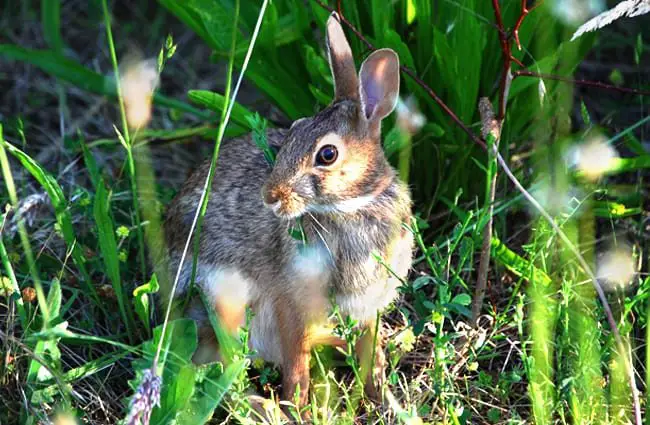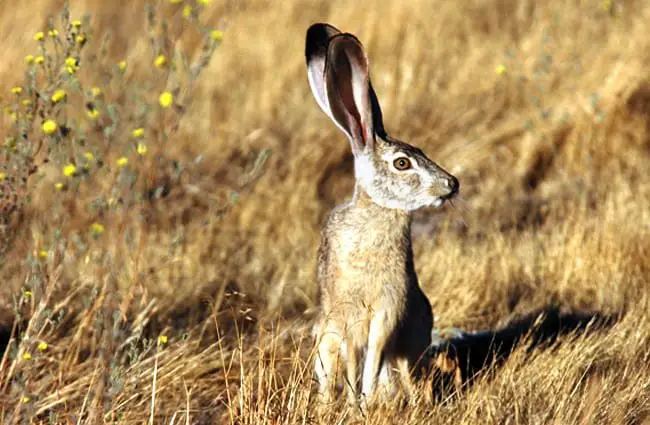The Remarkable Jackrabbit: A Deep Dive into Desert Life
The jackrabbit, a creature often mistaken for a hare, is a fascinating resident of the arid landscapes of western North America. More than just long ears and powerful legs, the jackrabbit embodies a remarkable suite of adaptations that allow it to thrive in harsh conditions. This guide delves into the world of the jackrabbit, exploring its biology, behavior, ecology, and its place in both the natural world and human culture.

What Exactly Is a Jackrabbit?
The name “jackrabbit” is somewhat misleading. These animals belong to the genus Lepus, which includes true hares, but several species are commonly called jackrabbits. The most well‑known are the black‑tailed jackrabbit (Lepus californicus), the white‑tailed jackrabbit (Lepus townsendii), and the Antelope jackrabbit (Lepus alleni). They are larger than most hares, possessing elongated ears that can reach up to 7 inches in length. These ears aren’t just for show; they play a vital role in thermoregulation, dissipating heat in the scorching desert sun. Their large feet act as natural “sand shoes,” allowing them to navigate loose terrain with ease.
Habitat and Distribution
Jackrabbits are primarily found in the southwestern United States and Mexico, with the black‑tailed jackrabbit extending into southern Canada. They inhabit a variety of environments, including deserts, shrublands, grasslands, and mountainous regions. White‑tailed jackrabbits prefer rugged, high‑elevation areas and shrublands, while the Antelope jackrabbit is found in the arid regions of Arizona, New Mexico, and parts of California and Mexico. The presence of suitable vegetation for food and cover is crucial for their survival.

Diet and Foraging Behavior
Jackrabbits are herbivores, with a diet consisting mainly of grasses, shrubs, and forbs. They are selective feeders, choosing plants based on nutritional value and availability. During the dry season, they may consume bark and twigs of shrubs. They practice coprophagy—eating their own soft fecal pellets—to extract additional nutrients. Jackrabbits are most active during twilight and at night, foraging when temperatures are cooler. They are opportunistic feeders and will sample various plants.
Evolutionary History
The evolutionary history of jackrabbits is rooted in the broader history of the Lepus genus, which emerged around 6 million years ago. The adaptation to arid environments likely drove the evolution of specific traits seen in jackrabbits, such as their large ears and efficient kidneys that conserve water. Fossil evidence suggests that their ancestors were smaller, more generalized herbivores. Over time, natural selection favored individuals with traits that enhanced survival in harsh, dry landscapes. The development of longer limbs allowed for faster running speeds, an advantage in evading predators. Their current morphology represents a culmination of millions of years of adaptation.

Reproduction and Life Cycle
Jackrabbits have a relatively short lifespan, typically living only 2 to 5 years in the wild. Breeding season varies depending on species and location but generally occurs from late winter to early summer. Females can have multiple litters per year, with each litter consisting of 2 to 6 young, called leverets. Leverets are precocial, born with fur, open eyes, and the ability to move shortly after birth. They rely on their mother for nursing but quickly begin grazing on vegetation. The young jackrabbits become independent within a few weeks. A high mortality rate among the young is common, with predation being a major factor.
Ecological Role and Interactions
Jackrabbits play a vital role in the desert ecosystem. They are an important food source for a variety of predators, including coyotes, foxes, hawks, owls, and snakes. They also contribute to seed dispersal through their droppings. As herbivores, they help shape plant communities by influencing vegetation growth. Their shallow digging sites aerate the soil and provide shelter for other animals. In areas of high population density, jackrabbits can significantly impact vegetation, sometimes leading to overgrazing. Their interactions with other animals are complex and contribute to the overall health and stability of the ecosystem.

Jackrabbits and Humans
Historically, jackrabbits were a source of food and hides for Native American tribes. Today, they are sometimes hunted for sport or considered agricultural pests that damage crops in certain areas. However, they are also admired for their beauty and resilience. Jackrabbits have become a symbol of the desert Southwest, appearing in art, literature, and popular culture. Their populations can fluctuate dramatically, sometimes reaching nuisance levels, requiring management strategies to minimize conflicts between humans and wildlife.
Spotting Jackrabbits in the Wild: A Guide for Enthusiasts
If you’re hoping to observe jackrabbits in their natural habitat, the best time is typically during dawn or dusk when they are most active. Look for open areas with sparse vegetation, such as deserts, shrublands, and grasslands. Be patient and quiet, as jackrabbits are easily startled. Binoculars can be helpful for spotting them from a distance. Remember to observe them from a respectful distance and avoid disturbing their habitat. Look for their distinctive tracks—large hind‑foot impressions—in sandy or dusty areas.

Caring for Jackrabbits in Captivity
Caring for jackrabbits in captivity requires a spacious enclosure with plenty of room to run and jump. Provide a diet of fresh hay, grasses, and leafy greens. Supplement their diet with high‑quality rabbit pellets. Provide a constant supply of fresh water. Enrichment is essential to prevent boredom and stress. Offer a variety of toys, such as tunnels, chew toys, and digging boxes. Jackrabbits are sensitive animals and require a calm and quiet environment. Avoid loud noises and sudden movements. Regular veterinary care is crucial to maintain their health and well‑being. It’s vital to remember they are not domesticated animals and retain wild instincts.
Intriguing Jackrabbit Facts
- Jackrabbits can run at speeds of up to 40 miles per hour.
- Their large ears help them dissipate heat and detect predators.
- They can survive on very little water, obtaining moisture from their food.
- Female jackrabbits can have multiple litters per year.
- They practice coprophagy to extract additional nutrients.
- Jackrabbits are crepuscular animals, most active during twilight.
- They have a highly developed sense of hearing.
- They are skilled jumpers, capable of leaping several feet in the air.

The jackrabbit is a remarkable example of adaptation and resilience. Its unique characteristics and vital role in the desert ecosystem make it a fascinating creature to study and appreciate. Whether you’re a researcher, an animal lover, or simply curious about the natural world, the jackrabbit offers a glimpse into the beauty and complexity of life in the arid landscapes of North America.

![Red Angus Closeup of a beautiful Red Angus cowPhoto by: U.S. Department of Agriculture [pubic domain]https://creativecommons.org/licenses/by/2.0/](https://animals.net/wp-content/uploads/2020/03/Red-Angus-4-238x178.jpg)




![Red Angus Closeup of a beautiful Red Angus cowPhoto by: U.S. Department of Agriculture [pubic domain]https://creativecommons.org/licenses/by/2.0/](https://animals.net/wp-content/uploads/2020/03/Red-Angus-4-100x75.jpg)

